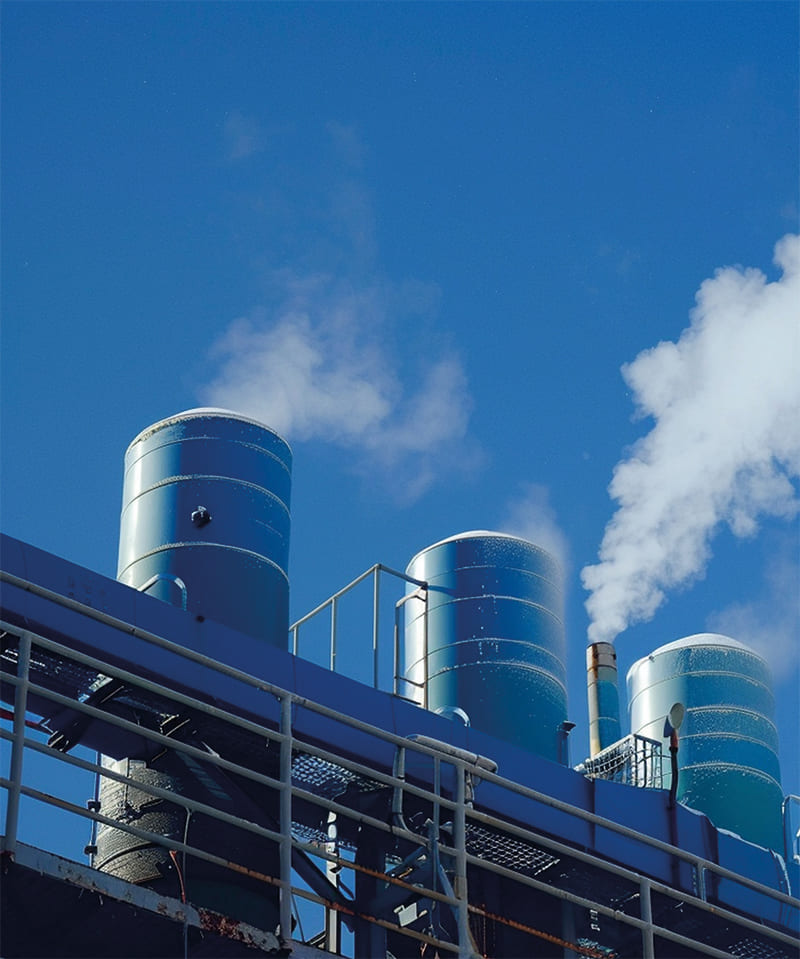NEWS
The Medium Combustion Plant Directive
The Medium Combustion Plant Directive (MCPD) 2015/2193 is under implementation
Check your facility to be compliant by 2025
Air quality is one of the most pressing environmental challenges of our time. With the aim of improving public health and protecting the environment, the European Union has introduced various regulations to reduce air pollution.
Among them, the Medium Combustion Plant Directive (MCPD) 2015/2193 is a significant step toward reducing harmful emissions.

What is the MCPD?
The MCPD Directive entered into force on 18 December 2015 and all Member States had to transpose it into their national law by 19 December 2017.
One of the main objectives of the directive is to limit pollutant emissions from medium combustion plants, such as nitrogen oxides (NOₓ). These pollutants are known for their harmful effects on human health and the environment.
The limits imposed by the Directive vary depending on the type of plant and fuel used (gas, oil, biomass, etc.).
What are medium combustion plants?
Medium combustion plants are those plants with a rated thermal capacity between 1 and 50 MW..
They are used in a wide variety of sectors, and although they are average in size, their overall contribution to air emissions is significant.
The MCPD refers to:
- All new facilities, as of December 20, 2018;
- All existing plants with a capacity between 5 and 50 mw, as of January 1, 2025;
- All existing plants with a capacity between 1 and 5 mw, as of January 1, 2030.
Type of plant
The directive distinguishes between new facilities (those licensed after December 20, 2018) and existing facilities (those licensed before that date).
New plants must comply with emission limits immediately, while existing plants have a longer time frame to comply, with deadlines set at 2025 and 2030, depending on the size of the plant.
What should medium plant owners do?
Plants must be monitored regularly to be compliant with emission limits (e.g., at least every three years for plants from 1MW to 20MW and every year for plants over 20MW*).
Monitoring results must be reported to the competent authorities, who may require further corrective measures in case of non-compliance.
Compliance with emission limit values

The combustion plant must necessarily comply with the emission limits established by the Directive.
In the event of noncompliance, the plant operator is required to take the necessary measures to ensure that compliance is restored in the shortest possible time; among these, replacing the burner with an adequately performing model is one of the most significant and decisive actions.
The replacement of the burner in the plant is a very important event, so much so that it is widely interpreted that the plant is no longer considered to be the existing one but is instead considered a new plant, that must therefore fall within the most restrictive emission levels. For this reason, it is necessary to perform all the checks and select the most appropriate, high-performance, low-emission burner.
Riello burners for medium combustion plants
The choice of Riello burners is proposed as the ideal solution for fulfilling legislative obligations and simultaneously optimizing the effectiveness of one's combustion system.
In fact, Riello offers a wide range of Low NOx and Ultra Low NOxburners, applicable to a variety of combustion systems, both civil and industrial, which enable the combustion plants not to exceed the emission values imposed by the Directive. The fact that they can also be used in existing installations also allows for significant plant upgrading and modernization.
Riello burners are also available with advanced combustion control systems that enable monitoring and maintenance of combustion performance over time, with energy savings and reduced air pollution as primary objectives.
25/10/2024
